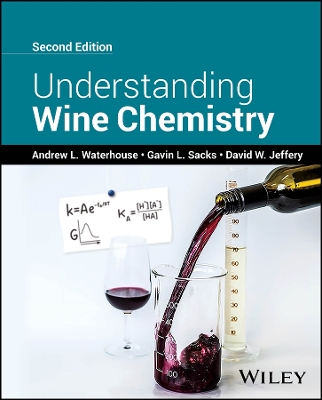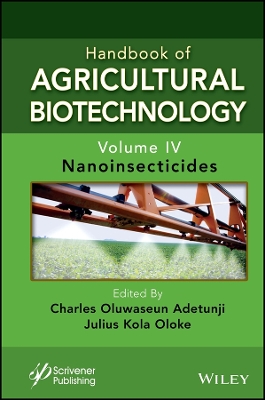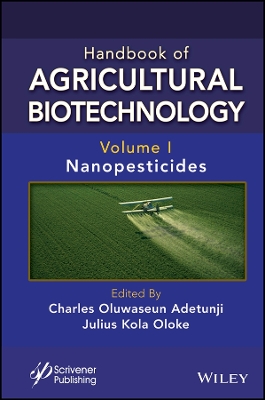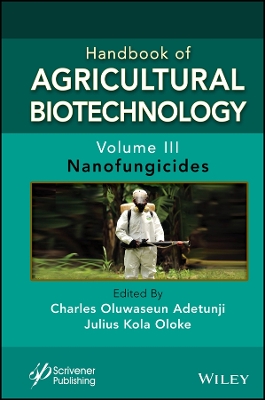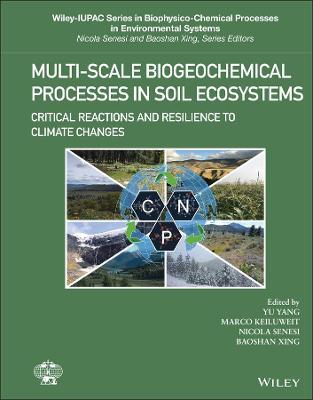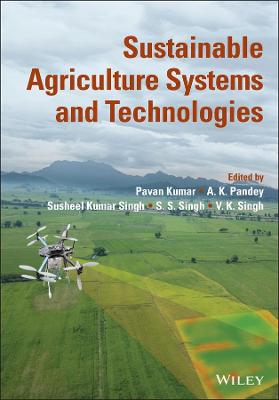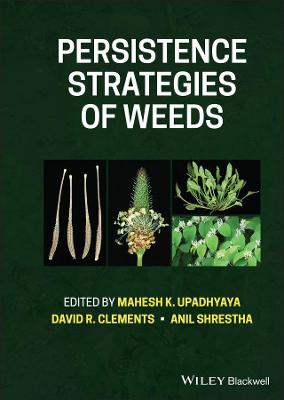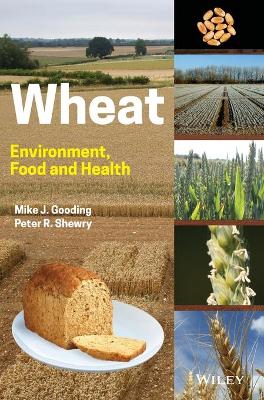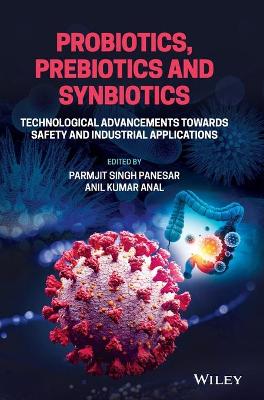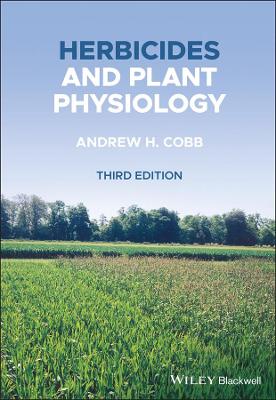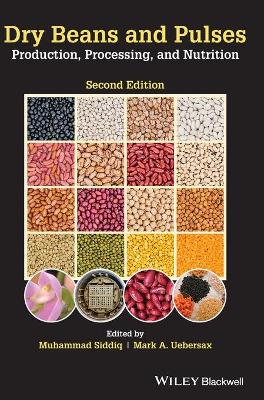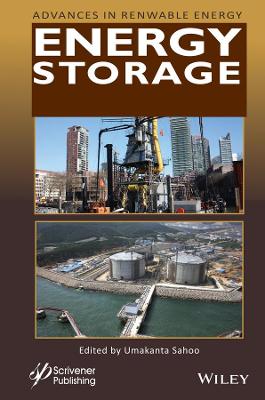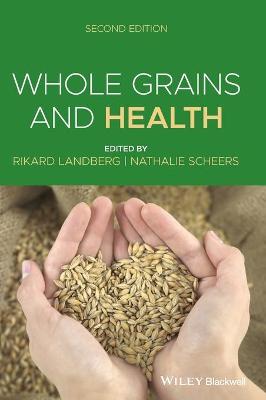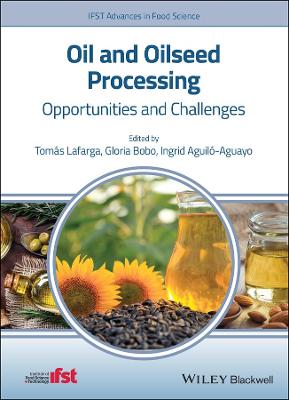Halal Food Handbook
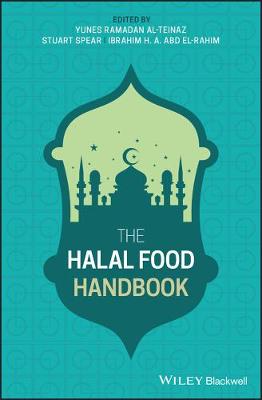 -15%
portes grátis
-15%
portes grátis
Halal Food Handbook
Abd El-Rahim, Ibrahim H. A.; Al-Teinaz, Yunes Ramadan; Spear, Stuart
John Wiley and Sons Ltd
02/2020
504
Dura
Inglês
9781118823125
15 a 20 dias
1018
Notes on Contributors xxiii
Acknowledgements xxxi
Foreword xxxiii
Introduction 1
John Pointing
References 6
Part I What is Halal 7
1 What is Halal Food? 9
Yunes Ramadan Al-Teinaz
1.1 Introduction 9
1.1.1 Basic Terms 9
1.1.2 What is Halal? 9
1.1.3 Halal and the Holy Quran 11
1.1.4 Other Sources of Halal Instruction 13
1.2 What is Halal Food? 14
1.2.1 Halal Foods in Islam 14
1.2.2 Halal Food Defined 15
1.2.3 Haram Food Defined 16
1.2.4 Fit and Wholesome Food 17
1.3 Animal Welfare and Halal Slaughter 18
1.3.1 Animal Welfare in Islam 18
1.3.2 Halal Slaughter 20
1.4 The Holy Quran and the Hadith 21
1.4.1 Verses that Explain Why Muslims Can Only Eat Halal Foods 21
1.4.2 Verses That Explain Why Only Allah Can Prescribe What is and is not Halal 22
1.4.3 Verses That Explain What is Halal and What is Haram 22
1.4.4 Examples from the Hadith (traditions) Covering Animal Welfare 24
1.4.5 Verses from the Hadith Concerning the Slaughter of Animals 25
2 Halal and Shariah Law 27
Mufti Mohammed Zubair Butt
2.1 Introduction 27
2.2 Lexical Definition 27
2.3 Legal Definition 27
2.4 Halal and the Values of Islamic Law 28
2.5 Halal and the Original Norm 29
2.6 Halal in Different Spheres 31
2.6.1 Food and Beverages 31
2.7 Marriage and Divorce 34
2.7.1 Raiment and Adornment 36
2.7.2 Financial Matters 36
2.7.3 Devotional Practices 36
2.7.4 General 37
2.8 Conclusions 37
References 38
Part II Animal Welfare and Slaughter 39
3 Animals in Islam and Halal Ethics 41
Magfirah Dahlan
3.1 Introduction 41
3.2 Halal in the Era of Mechanical Slaughter 42
3.3 Halal in the Era of Industrial Farming 43
3.4 Islamic Vegetarianism and Alternative Views of Animals 44
References 46
4 Animal Behaviour and Restraint in Halal Slaughter 47
Temple Grandin
4.1 Introduction 47
4.2 Pre-slaughter Restraining Stress 48
4.3 Benefits of Reduced Pre-slaughter Restraining Stress 48
4.4 Design Requirements for Animal Handling and Restraint Equipment 49
4.5 Improving Animal Movement 49
4.6 Use of Driving Aids from Moving Animals 50
4.7 Design of Restraint Devices 51
4.8 Basic Restraint Principles 52
4.9 Best Commercial Practices 53
4.10 Auditing Animal Handling and Slaughter 54
4.11 Conclusions 55
References 55
5 A Practical Guide to Animal Welfare during Halal Slaughter 59
Mehmet Haluk Anil
5.1 Animal Welfare During Primary Production and Transportation 59
5.2 Pre-slaughter Handling 60
5.3 Restraint During Slaughter 61
5.4 Religious Slaughter Methods: Halal Method 62
5.5 Background on Halal Slaughter and Rules 65
5.6 Physiological Effects of Neck Cutting 68
5.7 Exsanguination and Loss of Consciousness 69
5.8 Legal Considerations 70
References 70
6 The Slaughter Process: With or Without Stunning 73
Mehmet Haluk Anil and Yunes Ramadan Al-Teinaz
6.1 Religious Requirements and Alternative Choices 73
6.2 Slaughter without Stunning by Neck Cutting 74
6.3 Post-cut Management of Animals Slaughtered Without Stunning 75
6.4 Clinical Signs of Brain Death 75
6.5 Recommendations for Halal Slaughter 75
6.6 Exsanguination Techniques 76
6.7 Exsanguination and Loss of Consciousness 77
6.8 Blood Loss and Retention 78
6.9 Carcass and Meat Quality 78
6.10 Slaughter with Stunning 78
6.11 Post-Cut Stun 80
6.12 Recommendations 80
References 80
7 Recent Slaughter Methods and their Impact on Authenticity and Hygiene Standards 81
Ibrahim H.A. Abd El-Rahim
7.1 Introduction 81
7.2 Definition of Humane Slaughter 82
7.3 Halal Slaughter and Animal Welfare 82
7.4 Definition of Pre-slaughter Stunning 83
7.5 Aims of the Stunning 83
7.6 Types of Stunning 84
7.7 Stunning and Animal Welfare 84
7.8 General Impact of Stunning on Authenticity and Hygiene Standards 85
7.9 Inadequate Bleeding 85
7.10 Spoilage of the Meat 85
7.11 Low-quality Meat 86
7.12 Adverse Effects on Public Health 86
7.13 Specific Impact of Various Stunning Methods on Authenticity and Hygiene Standards 87
7.14 Simple Comparison Between Halal Slaughter and Slaughter involving Stunning 89
7.15 Conclusion 89
References 89
8 The Religious Slaughter of Animals 93
Joe M. Regenstein
8.1 Introduction 93
8.2 Allowed Animals 95
8.3 Prohibition of Blood 96
8.4 The Prohibition of Alcohol 112
8.5 Equipment Preparation 113
8.6 Meat of Animals Killed by the Ahl-al-Kitab 113
8.7 Gelatin 114
References 116
Part III Halal Ingredients and Food Production 121
9 Factory Farming and Halal Ethics 123
Faqir Muhammad Anjum, Muhammad Sajid Arshad and Shahzad Hussain
9.1 Introduction 123
9.2 Good Animal Husbandry Practices and Animal Welfare 124
9.3 Good Governance in Halal Slaughtering 124
9.4 Good Governance for Slaughtering of Livestock for Qurban 125
9.5 Animal Housing and Management 125
9.6 Veterinary Care 125
9.7 Cruelty to Animals Under Malaysian Law 126
9.8 Islamic Law in Modern Animal Slaughtering Practices 126
9.9 Modern Methods of Animal Slaughtering 127
9.10 The Halal Meat Chain 128
9.11 Halal Breeding: HCP1 129
9.12 Animal Welfare: HCP2 130
9.13 Stunning: HCP3 130
9.14 Knife: HCP4 131
9.15 Slaughterer: HCP5 131
9.16 Slaughter Method: HCP6 131
9.17 Invocation: HCP7 132
9.18 Packaging and Labelling: HCP8 132
9.19 Retailing: HCP9 132
9.20 A Simplified EU Legislative Outline for Animal Welfare 133
9.21 An Overview of Animal Welfare in the World 135
9.22 Farm Animals Welfare 137
9.23 Voluntary Guideline of Farm Animal Welfare 138
9.24 Factory Farming 139
9.24.1 Fish Farming 139
9.24.2 Veal Farming 140
9.24.3 Cattle Farming 140
9.24.4 Turkey Farming 140
9.24.5 Dairy Farming 140
9.25 Impacts on Economy 141
9.26 Impact on Environment 141
9.27 Antibiotics 141
9.28 Water 142
9.29 Climate Change 142
9.30 Impact of Confinement on Animal Welfare 142
References 143
10 Halal Ingredients in Food Processing and Food Additives 149
Yunes Ramadan Al-Teinaz
10.1 Introduction 149
10.2 Why Use Additives? 150
10.2.1 Aims of Food Processing 150
10.2.2 Food Ingredients Sources 151
10.2.3 Groups of Food Ingredients 151
10.2.4 Sources of Halal Ingredients 151
10.2.5 Haram Ingredients 151
10.2.6 Questionable/Mashbooh Ingredients 152
10.3 GMOs and Biotechnology 152
10.4 E Codes 153
10.4.1 E Code Groups 153
10.5 Requirements for Halal Food Processing 153
10.6 Hygiene and Cross-contamination 154
10.7 Halal Markets 155
10.8 Some Food Ingredients 155
10.9 Food Processing Aids 156
10.9.1 Food Colours 156
10.9.2 Preservatives 156
10.9.3 Antioxidants 156
10.9.4 Sweeteners 157
10.9.5 Emulsifiers, Stabilizers, Thickeners, and Gelling Agents 157
10.9.6 Flavour Enhancers and Flavourings 157
10.10 Food Conservation and Additives 158
10.10.1 Food Conservation 158
10.10.2 E Numbers and Additives of Animal Origin 158
10.10.3 Forbidden Additives 158
10.10.4 Fat Additives 161
10.10.5 Alcohol and Ethanol 161
10.10.6 Ice Cream 162
10.10.7 Drinks 162
10.10.8 Chewing Gum 162
10.10.9 Fruits and Vegetables 163
10.10.10 Cube Sugar 163
10.10.11 Medication 163
10.10.12 Antibiotics in Animal Feeds 163
10.10.13 Toothpaste 164
10.10.14 Soap, Shampoo, and Cosmetics 164
10.11 Conclusions 165
References 166
11 Halal and Genetically Modified Ingredients 169
Majed Alhariri
11.1 What is a Genetically Modified Organism? 169
11.2 How Does Genetic Modification Work? 169
11.3 Currently Commercialized GM Crops 170
11.4 GM Crop Benefits 171
11.5 Concerns about Food Safety and Human Health 172
11.6 GMOs from the Halal and Tayyib Point of View 178
11.6.1 Interfering with Divine Work 178
11.6.2 Causing Harm and Corruption 179
11.6.3 Using Genes from Haram Sources 180
11.7 Conclusion 180
References 181
12 Halal Personal Hygiene and Cosmetics 183
Mah Hussain-Gambles
12.1 Introduction 183
12.2 Personal Care Ingredients 186
12.3 Alcohol-free 191
12.4 Halal Certification of Personal Care Products 193
12.5 Certification Processing 193
12.6 Inspection 194
12.7 Staff Training 194
12.8 Segregation 194
12.9 Storage and Warehousing 194
12.10 Transporting 195
12.11 Conclusion 196
Part IV Halal Standards, Procedures, and Certification 197
13 Halal and HACCP: Guidelines for the Halal Food Industry 199
Hani Mansour M. Al-Mazeedi, Yunes Ramadan Al-Teinaz and John Pointing
13.1 Introduction 199
13.2 Why HACCP? 200
13.3 Halal and HACCP 201
13.4 Application of HACCP to the Halal Food Industry 202
13.5 Critical Control Points 203
13.6 Conclusion 203
References 204
14 Halal International Standards and Certification 205
Mariam Abdul Latif
14.1 Introduction 205
14.2 Harmonization of Halal Standards 205
14.3 Halal Standards 206
14.4 Halal International Standards 207
14.5 Codex General Guideline for Use of the Term Halal 208
14.6 OIC/SMIIC 1:2011 General Guidelines on Halal Food 212
14.7 Halal Certification 220
14.8 Halal Accreditation Standard 220
14.9 International Halal Certification Model 220
14.10 Conformity Assessment 222
14.11 The Lack of Credibility of Halal Certification Bodies 223
14.12 Capability Building: Consultants and Training Providers 224
14.13 The Way Forward 224
14.14 Conclusion 225
References 225
15 Halal Certification and International Halal Standards 227
Yunes Ramadan Al-Teinaz and Hani Mansour M. Al-Mazeedi
15.1 Introduction 227
15.2 The Halal Certificate 229
15.3 What is Halal Meat? 229
15.4 History of Religious Slaughter in the UK 230
15.5 Halal Certification in the UK 231
15.5.1 Reliance on Local Suppliers and Religious Leaders 233
15.5.2 Legislation 236
15.6 Accreditation/Regulation 236
15.7 Halal Food Fraud 237
15.7.1 Illegal Slaughter 237
15.7.2 Mislabelling of Halal Meat 238
15.8 Halal Certification 239
15.8.1 The Aim of Certifying Products 239
15.8.2 The Halal Certificate 239
15.8.3 Halal Assurance System 240
15.8.4 The Internal Halal Audit Team 240
15.8.5 Benefits of Halal Certification 241
15.9 International Standards 241
15.9.1 Definition 241
15.9.2 Positive Aspects of International Halal Standards 242
15.9.3 Negative Aspects of International Halal Standards 243
15.10 Common Mistakes Made by HCBs 243
15.10.1 Lack of a Competent Halal Certification System 243
15.10.2 Not Following Halal Procedures 244
15.10.3 Lack of Transparency 244
15.10.4 Lack of Islamic Behaviour 244
15.10.5 Lack of Commitment from Management 245
15.10.6 Lack of Halal Raw Materials Supply 246
15.10.7 Lack of Halal Technical Training 246
15.10.8 Not All Halal-certified Products/Services or Meat Comply with Halal Requirements 246
15.11 Conclusion 246
15.12 Recommendations 247
References 248
Part V Food Law, Regulations, and Food Fraud 253
16 Legal Aspects of Halal Slaughter and Certification in the European Union and its Member States 255
Rossella Bottoni
16.1 Introduction 255
16.2 Legal Aspects of Halal Slaughter in the EU and its Member States 256
16.2.1 The EU 256
16.2.2 The EU Member States 260
16.3 Legal Aspects of Halal Certification in the EU and its Member States 263
References 268
17 The Legal Framework of General Food Law and the Stunning of Animals Prior to Slaughter 271
John Pointing
17.1 Background to the General Food Law 271
17.1.1 The Precautionary Principle and Risk 272
17.2 Consumer Protection 272
17.3 Article 14: Food Safety Requirements 272
17.3.1 Definition of 'Food' 273
17.4 'Placing on the Market' 273
17.4.1 Food That is Unsafe 273
17.4.2 Food That is Injurious to Health 274
17.4.3 Food That is Unfit for Human Consumption 274
17.4.4 Batch, Lot or Consignment 274
17.5 Food Safety Offences 275
17.5.1 Food Adulteration: Section 7 Food Safety Act 1990 275
17.5.2 Selling Food Not Complying with the Food Safety Requirements: Section 8 Food Safety Act 276
17.6 Breaches of Food Safety and Hygiene Regulations 276
17.7 Consumer Protection Offences 277
17.7.1 Article 16: Labelling, Presentation, and Advertising 277
17.7.2 Section 15: Falsely Describing or Presenting Food 277
17.7.3 Section 14: Selling Food Not of the Nature or Substance or Quality Demanded 277
17.7.4 Nature, Substance, or Quality of the Food 277
17.8 Offences by Suppliers 278
17.9 Penalties 279
17.10 Halal Slaughter and Food Law 279
References 281
18 Detecting Adulteration in Halal Foods 283
M. Diaa El-Din H. Farag
18.1 Introduction 283
18.2 Deoxyribonucleic Acid Techniques 285
18.3 DNA Extraction and Sampling Effects 286
18.4 PCR-based Techniques 287
18.4.1 Polymerase Chain Reaction 287
18.4.2 PCR Product Detection 290
18.4.3 PCR Using Species-Specific Primers 290
18.4.4 Species-Specific Multiplex Polymerase Chain Reaction 292
18.4.5 PCR-RFLP 293
18.4.6 PCR-RAPD 297
18.4.7 Real-time PCR 298
18.4.8 Species-Specific Real-time PCR (TaqMan) 300
18.4.9 Immunological Techniques (ELISA) 302
18.5 Advantage and Disadvantage of Immunochemical Techniques 305
18.6 Electronic Nose 306
References 308
19 Food Fraud 321
John Pointing, Yunes Ramadan Al-Teinaz, John Lever, Mary Critchley and Stuart Spear
19.1 Introduction 321
19.2 Food Ingredients and False Labelling 322
19.3 Types of Meat Fraud 323
19.4 Fraud Involving Chicken 325
19.5 Problems of Halal Regulation 326
19.6 Conclusion 327
References 328
Part VI Halal vs Kosher 331
20 The Halal and Kosher Food Experience in the UK 333
Yunes Ramadan Al-Teinaz, Joe M. Regenstein, John Lever, A. Majid Katme and Sol Unsdorfer
20.1 Introduction 333
20.2 Halal and Shechita: The Muslim and Jewish Religious Humane Methods 334
20.3 Legislation 334
20.4 Conclusion 340
References 341
21 Establishing a Dialogue Between Science, Society and Religion About Religious Slaughter: The Experience of the European Funded Project Dialrel 343
Mara Miele, John Lever and Adrian Evans
21.1 The Work With the Advisory Board 343
21.2 The Activities of the Certifying Bodies 344
21.3 Muslim and Jewish Consumers' Attitudes to Halal and Kosher Foods and Religious Slaughter 346
21.4 Conclusions 348
References 349
Part VII Halal in Different Countries 353
22 Halal Food Production in the Arab World 355
Majed Alhariri and Hani Mansour M. Al-Mazeedi
22.1 Introduction 355
22.2 The Reality of Halal Food Production in the Arab World 357
22.3 The Potential Value of the Halal Market in the Arab World 359
22.4 Halal Organization and Halal Certification Bodies in Arab Countries 362
22.5 The Obstacles and Challenges Facing Halal Production in the Arab World 363
References 366
23 Halal Food in Egypt 369
M. Diaa El-Din H. Farag
23.1 Introduction 369
23.2 Global Halal Market 370
23.3 Halal Definitions and Requirements for Food Products and Ingredients 372
23.3.1 Questionable Products 374
23.4 Relationship between Halal, Hygiene, Safety Food, and Phytosanitary Measures in Egypt 374
23.5 Standards, Testing, Labelling, and Certification 375
23.6 The Demand for Halal Product Certification 376
23.7 Conditions, Regulations, and Certification of Halal Food Imported to Egypt 384
23.8 Control of Halal Slaughtering of Animals for Human Consumption 385
23.9 Compliance with Animal Welfare in Halal Slaughter 386
23.10 Halal Certification 386
23.11 Halal Slaughter Facilities and Products Registration 387
23.12 Egypt Opportunities 389
23.13 Halal Food Testing 389
23.14 The Egyptian Governmental Agencies in Charge of Halal Food 391
References 391
24 Halal Food in the USA 393
Joe M. Regenstein and Umar Moghul
24.1 Halal in the USA 393
24.2 Religion, Food, and Government 394
24.3 Consumer Protection 395
24.4 Certification: Agencies and Standards 396
24.5 Markings 398
24.5.1 Inspections 399
24.6 Plants: Halal and Non-halal 400
24.7 Packaging 401
24.8 Ingredients: Alcohol 402
24.9 The Issue of Multiple Agencies 403
24.10 Selecting an Agency 403
24.11 The Religious Slaughter of Animals 404
24.12 Religious Slaughter (Kosher and Halal) 407
24.13 The Commercial Side of Halal Foods 410
References 411
25 Halal Food in Italy 413
Beniamino Cenci Goga
25.1 Conventional and Religious Slaughter: Animal Protection 413
25.2 Restraining Animals 416
25.2.1 Restraint in Conventional Slaughter 416
25.2.2 Restraint in Religious Slaughter 417
25.2.3 Correct Procedure 418
25.3 Animal Welfare for Farm Animals 418
25.4 Do Animal Have Rights? 420
25.5 Religious Slaughter in Italy 421
25.5.1 Data from the European Project Dialrel (www.dialrel.eu) 422
25.6 Ritual Slaughter in Italy: Critical Aspects and Proposals 428
25.6.1 Demonstrative Stage on Site for Stunning 429
25.6.1.1 Electro-narcosis Prior to Slaughter 430
25.6.1.2 Stunning by Captive Bolt Immediately after Incision of the Neck Vessels 430
25.6.1.3 Local Initiatives Regarding Ritual Slaughter and Results 431
25.7 Halal Certification in Italy 432
25.7.1 Halal Italia 43 4
25.7.2 COREIS 434
References 435
Index 439
Notes on Contributors xxiii
Acknowledgements xxxi
Foreword xxxiii
Introduction 1
John Pointing
References 6
Part I What is Halal 7
1 What is Halal Food? 9
Yunes Ramadan Al-Teinaz
1.1 Introduction 9
1.1.1 Basic Terms 9
1.1.2 What is Halal? 9
1.1.3 Halal and the Holy Quran 11
1.1.4 Other Sources of Halal Instruction 13
1.2 What is Halal Food? 14
1.2.1 Halal Foods in Islam 14
1.2.2 Halal Food Defined 15
1.2.3 Haram Food Defined 16
1.2.4 Fit and Wholesome Food 17
1.3 Animal Welfare and Halal Slaughter 18
1.3.1 Animal Welfare in Islam 18
1.3.2 Halal Slaughter 20
1.4 The Holy Quran and the Hadith 21
1.4.1 Verses that Explain Why Muslims Can Only Eat Halal Foods 21
1.4.2 Verses That Explain Why Only Allah Can Prescribe What is and is not Halal 22
1.4.3 Verses That Explain What is Halal and What is Haram 22
1.4.4 Examples from the Hadith (traditions) Covering Animal Welfare 24
1.4.5 Verses from the Hadith Concerning the Slaughter of Animals 25
2 Halal and Shariah Law 27
Mufti Mohammed Zubair Butt
2.1 Introduction 27
2.2 Lexical Definition 27
2.3 Legal Definition 27
2.4 Halal and the Values of Islamic Law 28
2.5 Halal and the Original Norm 29
2.6 Halal in Different Spheres 31
2.6.1 Food and Beverages 31
2.7 Marriage and Divorce 34
2.7.1 Raiment and Adornment 36
2.7.2 Financial Matters 36
2.7.3 Devotional Practices 36
2.7.4 General 37
2.8 Conclusions 37
References 38
Part II Animal Welfare and Slaughter 39
3 Animals in Islam and Halal Ethics 41
Magfirah Dahlan
3.1 Introduction 41
3.2 Halal in the Era of Mechanical Slaughter 42
3.3 Halal in the Era of Industrial Farming 43
3.4 Islamic Vegetarianism and Alternative Views of Animals 44
References 46
4 Animal Behaviour and Restraint in Halal Slaughter 47
Temple Grandin
4.1 Introduction 47
4.2 Pre-slaughter Restraining Stress 48
4.3 Benefits of Reduced Pre-slaughter Restraining Stress 48
4.4 Design Requirements for Animal Handling and Restraint Equipment 49
4.5 Improving Animal Movement 49
4.6 Use of Driving Aids from Moving Animals 50
4.7 Design of Restraint Devices 51
4.8 Basic Restraint Principles 52
4.9 Best Commercial Practices 53
4.10 Auditing Animal Handling and Slaughter 54
4.11 Conclusions 55
References 55
5 A Practical Guide to Animal Welfare during Halal Slaughter 59
Mehmet Haluk Anil
5.1 Animal Welfare During Primary Production and Transportation 59
5.2 Pre-slaughter Handling 60
5.3 Restraint During Slaughter 61
5.4 Religious Slaughter Methods: Halal Method 62
5.5 Background on Halal Slaughter and Rules 65
5.6 Physiological Effects of Neck Cutting 68
5.7 Exsanguination and Loss of Consciousness 69
5.8 Legal Considerations 70
References 70
6 The Slaughter Process: With or Without Stunning 73
Mehmet Haluk Anil and Yunes Ramadan Al-Teinaz
6.1 Religious Requirements and Alternative Choices 73
6.2 Slaughter without Stunning by Neck Cutting 74
6.3 Post-cut Management of Animals Slaughtered Without Stunning 75
6.4 Clinical Signs of Brain Death 75
6.5 Recommendations for Halal Slaughter 75
6.6 Exsanguination Techniques 76
6.7 Exsanguination and Loss of Consciousness 77
6.8 Blood Loss and Retention 78
6.9 Carcass and Meat Quality 78
6.10 Slaughter with Stunning 78
6.11 Post-Cut Stun 80
6.12 Recommendations 80
References 80
7 Recent Slaughter Methods and their Impact on Authenticity and Hygiene Standards 81
Ibrahim H.A. Abd El-Rahim
7.1 Introduction 81
7.2 Definition of Humane Slaughter 82
7.3 Halal Slaughter and Animal Welfare 82
7.4 Definition of Pre-slaughter Stunning 83
7.5 Aims of the Stunning 83
7.6 Types of Stunning 84
7.7 Stunning and Animal Welfare 84
7.8 General Impact of Stunning on Authenticity and Hygiene Standards 85
7.9 Inadequate Bleeding 85
7.10 Spoilage of the Meat 85
7.11 Low-quality Meat 86
7.12 Adverse Effects on Public Health 86
7.13 Specific Impact of Various Stunning Methods on Authenticity and Hygiene Standards 87
7.14 Simple Comparison Between Halal Slaughter and Slaughter involving Stunning 89
7.15 Conclusion 89
References 89
8 The Religious Slaughter of Animals 93
Joe M. Regenstein
8.1 Introduction 93
8.2 Allowed Animals 95
8.3 Prohibition of Blood 96
8.4 The Prohibition of Alcohol 112
8.5 Equipment Preparation 113
8.6 Meat of Animals Killed by the Ahl-al-Kitab 113
8.7 Gelatin 114
References 116
Part III Halal Ingredients and Food Production 121
9 Factory Farming and Halal Ethics 123
Faqir Muhammad Anjum, Muhammad Sajid Arshad and Shahzad Hussain
9.1 Introduction 123
9.2 Good Animal Husbandry Practices and Animal Welfare 124
9.3 Good Governance in Halal Slaughtering 124
9.4 Good Governance for Slaughtering of Livestock for Qurban 125
9.5 Animal Housing and Management 125
9.6 Veterinary Care 125
9.7 Cruelty to Animals Under Malaysian Law 126
9.8 Islamic Law in Modern Animal Slaughtering Practices 126
9.9 Modern Methods of Animal Slaughtering 127
9.10 The Halal Meat Chain 128
9.11 Halal Breeding: HCP1 129
9.12 Animal Welfare: HCP2 130
9.13 Stunning: HCP3 130
9.14 Knife: HCP4 131
9.15 Slaughterer: HCP5 131
9.16 Slaughter Method: HCP6 131
9.17 Invocation: HCP7 132
9.18 Packaging and Labelling: HCP8 132
9.19 Retailing: HCP9 132
9.20 A Simplified EU Legislative Outline for Animal Welfare 133
9.21 An Overview of Animal Welfare in the World 135
9.22 Farm Animals Welfare 137
9.23 Voluntary Guideline of Farm Animal Welfare 138
9.24 Factory Farming 139
9.24.1 Fish Farming 139
9.24.2 Veal Farming 140
9.24.3 Cattle Farming 140
9.24.4 Turkey Farming 140
9.24.5 Dairy Farming 140
9.25 Impacts on Economy 141
9.26 Impact on Environment 141
9.27 Antibiotics 141
9.28 Water 142
9.29 Climate Change 142
9.30 Impact of Confinement on Animal Welfare 142
References 143
10 Halal Ingredients in Food Processing and Food Additives 149
Yunes Ramadan Al-Teinaz
10.1 Introduction 149
10.2 Why Use Additives? 150
10.2.1 Aims of Food Processing 150
10.2.2 Food Ingredients Sources 151
10.2.3 Groups of Food Ingredients 151
10.2.4 Sources of Halal Ingredients 151
10.2.5 Haram Ingredients 151
10.2.6 Questionable/Mashbooh Ingredients 152
10.3 GMOs and Biotechnology 152
10.4 E Codes 153
10.4.1 E Code Groups 153
10.5 Requirements for Halal Food Processing 153
10.6 Hygiene and Cross-contamination 154
10.7 Halal Markets 155
10.8 Some Food Ingredients 155
10.9 Food Processing Aids 156
10.9.1 Food Colours 156
10.9.2 Preservatives 156
10.9.3 Antioxidants 156
10.9.4 Sweeteners 157
10.9.5 Emulsifiers, Stabilizers, Thickeners, and Gelling Agents 157
10.9.6 Flavour Enhancers and Flavourings 157
10.10 Food Conservation and Additives 158
10.10.1 Food Conservation 158
10.10.2 E Numbers and Additives of Animal Origin 158
10.10.3 Forbidden Additives 158
10.10.4 Fat Additives 161
10.10.5 Alcohol and Ethanol 161
10.10.6 Ice Cream 162
10.10.7 Drinks 162
10.10.8 Chewing Gum 162
10.10.9 Fruits and Vegetables 163
10.10.10 Cube Sugar 163
10.10.11 Medication 163
10.10.12 Antibiotics in Animal Feeds 163
10.10.13 Toothpaste 164
10.10.14 Soap, Shampoo, and Cosmetics 164
10.11 Conclusions 165
References 166
11 Halal and Genetically Modified Ingredients 169
Majed Alhariri
11.1 What is a Genetically Modified Organism? 169
11.2 How Does Genetic Modification Work? 169
11.3 Currently Commercialized GM Crops 170
11.4 GM Crop Benefits 171
11.5 Concerns about Food Safety and Human Health 172
11.6 GMOs from the Halal and Tayyib Point of View 178
11.6.1 Interfering with Divine Work 178
11.6.2 Causing Harm and Corruption 179
11.6.3 Using Genes from Haram Sources 180
11.7 Conclusion 180
References 181
12 Halal Personal Hygiene and Cosmetics 183
Mah Hussain-Gambles
12.1 Introduction 183
12.2 Personal Care Ingredients 186
12.3 Alcohol-free 191
12.4 Halal Certification of Personal Care Products 193
12.5 Certification Processing 193
12.6 Inspection 194
12.7 Staff Training 194
12.8 Segregation 194
12.9 Storage and Warehousing 194
12.10 Transporting 195
12.11 Conclusion 196
Part IV Halal Standards, Procedures, and Certification 197
13 Halal and HACCP: Guidelines for the Halal Food Industry 199
Hani Mansour M. Al-Mazeedi, Yunes Ramadan Al-Teinaz and John Pointing
13.1 Introduction 199
13.2 Why HACCP? 200
13.3 Halal and HACCP 201
13.4 Application of HACCP to the Halal Food Industry 202
13.5 Critical Control Points 203
13.6 Conclusion 203
References 204
14 Halal International Standards and Certification 205
Mariam Abdul Latif
14.1 Introduction 205
14.2 Harmonization of Halal Standards 205
14.3 Halal Standards 206
14.4 Halal International Standards 207
14.5 Codex General Guideline for Use of the Term Halal 208
14.6 OIC/SMIIC 1:2011 General Guidelines on Halal Food 212
14.7 Halal Certification 220
14.8 Halal Accreditation Standard 220
14.9 International Halal Certification Model 220
14.10 Conformity Assessment 222
14.11 The Lack of Credibility of Halal Certification Bodies 223
14.12 Capability Building: Consultants and Training Providers 224
14.13 The Way Forward 224
14.14 Conclusion 225
References 225
15 Halal Certification and International Halal Standards 227
Yunes Ramadan Al-Teinaz and Hani Mansour M. Al-Mazeedi
15.1 Introduction 227
15.2 The Halal Certificate 229
15.3 What is Halal Meat? 229
15.4 History of Religious Slaughter in the UK 230
15.5 Halal Certification in the UK 231
15.5.1 Reliance on Local Suppliers and Religious Leaders 233
15.5.2 Legislation 236
15.6 Accreditation/Regulation 236
15.7 Halal Food Fraud 237
15.7.1 Illegal Slaughter 237
15.7.2 Mislabelling of Halal Meat 238
15.8 Halal Certification 239
15.8.1 The Aim of Certifying Products 239
15.8.2 The Halal Certificate 239
15.8.3 Halal Assurance System 240
15.8.4 The Internal Halal Audit Team 240
15.8.5 Benefits of Halal Certification 241
15.9 International Standards 241
15.9.1 Definition 241
15.9.2 Positive Aspects of International Halal Standards 242
15.9.3 Negative Aspects of International Halal Standards 243
15.10 Common Mistakes Made by HCBs 243
15.10.1 Lack of a Competent Halal Certification System 243
15.10.2 Not Following Halal Procedures 244
15.10.3 Lack of Transparency 244
15.10.4 Lack of Islamic Behaviour 244
15.10.5 Lack of Commitment from Management 245
15.10.6 Lack of Halal Raw Materials Supply 246
15.10.7 Lack of Halal Technical Training 246
15.10.8 Not All Halal-certified Products/Services or Meat Comply with Halal Requirements 246
15.11 Conclusion 246
15.12 Recommendations 247
References 248
Part V Food Law, Regulations, and Food Fraud 253
16 Legal Aspects of Halal Slaughter and Certification in the European Union and its Member States 255
Rossella Bottoni
16.1 Introduction 255
16.2 Legal Aspects of Halal Slaughter in the EU and its Member States 256
16.2.1 The EU 256
16.2.2 The EU Member States 260
16.3 Legal Aspects of Halal Certification in the EU and its Member States 263
References 268
17 The Legal Framework of General Food Law and the Stunning of Animals Prior to Slaughter 271
John Pointing
17.1 Background to the General Food Law 271
17.1.1 The Precautionary Principle and Risk 272
17.2 Consumer Protection 272
17.3 Article 14: Food Safety Requirements 272
17.3.1 Definition of 'Food' 273
17.4 'Placing on the Market' 273
17.4.1 Food That is Unsafe 273
17.4.2 Food That is Injurious to Health 274
17.4.3 Food That is Unfit for Human Consumption 274
17.4.4 Batch, Lot or Consignment 274
17.5 Food Safety Offences 275
17.5.1 Food Adulteration: Section 7 Food Safety Act 1990 275
17.5.2 Selling Food Not Complying with the Food Safety Requirements: Section 8 Food Safety Act 276
17.6 Breaches of Food Safety and Hygiene Regulations 276
17.7 Consumer Protection Offences 277
17.7.1 Article 16: Labelling, Presentation, and Advertising 277
17.7.2 Section 15: Falsely Describing or Presenting Food 277
17.7.3 Section 14: Selling Food Not of the Nature or Substance or Quality Demanded 277
17.7.4 Nature, Substance, or Quality of the Food 277
17.8 Offences by Suppliers 278
17.9 Penalties 279
17.10 Halal Slaughter and Food Law 279
References 281
18 Detecting Adulteration in Halal Foods 283
M. Diaa El-Din H. Farag
18.1 Introduction 283
18.2 Deoxyribonucleic Acid Techniques 285
18.3 DNA Extraction and Sampling Effects 286
18.4 PCR-based Techniques 287
18.4.1 Polymerase Chain Reaction 287
18.4.2 PCR Product Detection 290
18.4.3 PCR Using Species-Specific Primers 290
18.4.4 Species-Specific Multiplex Polymerase Chain Reaction 292
18.4.5 PCR-RFLP 293
18.4.6 PCR-RAPD 297
18.4.7 Real-time PCR 298
18.4.8 Species-Specific Real-time PCR (TaqMan) 300
18.4.9 Immunological Techniques (ELISA) 302
18.5 Advantage and Disadvantage of Immunochemical Techniques 305
18.6 Electronic Nose 306
References 308
19 Food Fraud 321
John Pointing, Yunes Ramadan Al-Teinaz, John Lever, Mary Critchley and Stuart Spear
19.1 Introduction 321
19.2 Food Ingredients and False Labelling 322
19.3 Types of Meat Fraud 323
19.4 Fraud Involving Chicken 325
19.5 Problems of Halal Regulation 326
19.6 Conclusion 327
References 328
Part VI Halal vs Kosher 331
20 The Halal and Kosher Food Experience in the UK 333
Yunes Ramadan Al-Teinaz, Joe M. Regenstein, John Lever, A. Majid Katme and Sol Unsdorfer
20.1 Introduction 333
20.2 Halal and Shechita: The Muslim and Jewish Religious Humane Methods 334
20.3 Legislation 334
20.4 Conclusion 340
References 341
21 Establishing a Dialogue Between Science, Society and Religion About Religious Slaughter: The Experience of the European Funded Project Dialrel 343
Mara Miele, John Lever and Adrian Evans
21.1 The Work With the Advisory Board 343
21.2 The Activities of the Certifying Bodies 344
21.3 Muslim and Jewish Consumers' Attitudes to Halal and Kosher Foods and Religious Slaughter 346
21.4 Conclusions 348
References 349
Part VII Halal in Different Countries 353
22 Halal Food Production in the Arab World 355
Majed Alhariri and Hani Mansour M. Al-Mazeedi
22.1 Introduction 355
22.2 The Reality of Halal Food Production in the Arab World 357
22.3 The Potential Value of the Halal Market in the Arab World 359
22.4 Halal Organization and Halal Certification Bodies in Arab Countries 362
22.5 The Obstacles and Challenges Facing Halal Production in the Arab World 363
References 366
23 Halal Food in Egypt 369
M. Diaa El-Din H. Farag
23.1 Introduction 369
23.2 Global Halal Market 370
23.3 Halal Definitions and Requirements for Food Products and Ingredients 372
23.3.1 Questionable Products 374
23.4 Relationship between Halal, Hygiene, Safety Food, and Phytosanitary Measures in Egypt 374
23.5 Standards, Testing, Labelling, and Certification 375
23.6 The Demand for Halal Product Certification 376
23.7 Conditions, Regulations, and Certification of Halal Food Imported to Egypt 384
23.8 Control of Halal Slaughtering of Animals for Human Consumption 385
23.9 Compliance with Animal Welfare in Halal Slaughter 386
23.10 Halal Certification 386
23.11 Halal Slaughter Facilities and Products Registration 387
23.12 Egypt Opportunities 389
23.13 Halal Food Testing 389
23.14 The Egyptian Governmental Agencies in Charge of Halal Food 391
References 391
24 Halal Food in the USA 393
Joe M. Regenstein and Umar Moghul
24.1 Halal in the USA 393
24.2 Religion, Food, and Government 394
24.3 Consumer Protection 395
24.4 Certification: Agencies and Standards 396
24.5 Markings 398
24.5.1 Inspections 399
24.6 Plants: Halal and Non-halal 400
24.7 Packaging 401
24.8 Ingredients: Alcohol 402
24.9 The Issue of Multiple Agencies 403
24.10 Selecting an Agency 403
24.11 The Religious Slaughter of Animals 404
24.12 Religious Slaughter (Kosher and Halal) 407
24.13 The Commercial Side of Halal Foods 410
References 411
25 Halal Food in Italy 413
Beniamino Cenci Goga
25.1 Conventional and Religious Slaughter: Animal Protection 413
25.2 Restraining Animals 416
25.2.1 Restraint in Conventional Slaughter 416
25.2.2 Restraint in Religious Slaughter 417
25.2.3 Correct Procedure 418
25.3 Animal Welfare for Farm Animals 418
25.4 Do Animal Have Rights? 420
25.5 Religious Slaughter in Italy 421
25.5.1 Data from the European Project Dialrel (www.dialrel.eu) 422
25.6 Ritual Slaughter in Italy: Critical Aspects and Proposals 428
25.6.1 Demonstrative Stage on Site for Stunning 429
25.6.1.1 Electro-narcosis Prior to Slaughter 430
25.6.1.2 Stunning by Captive Bolt Immediately after Incision of the Neck Vessels 430
25.6.1.3 Local Initiatives Regarding Ritual Slaughter and Results 431
25.7 Halal Certification in Italy 432
25.7.1 Halal Italia 43 4
25.7.2 COREIS 434
References 435
Index 439

